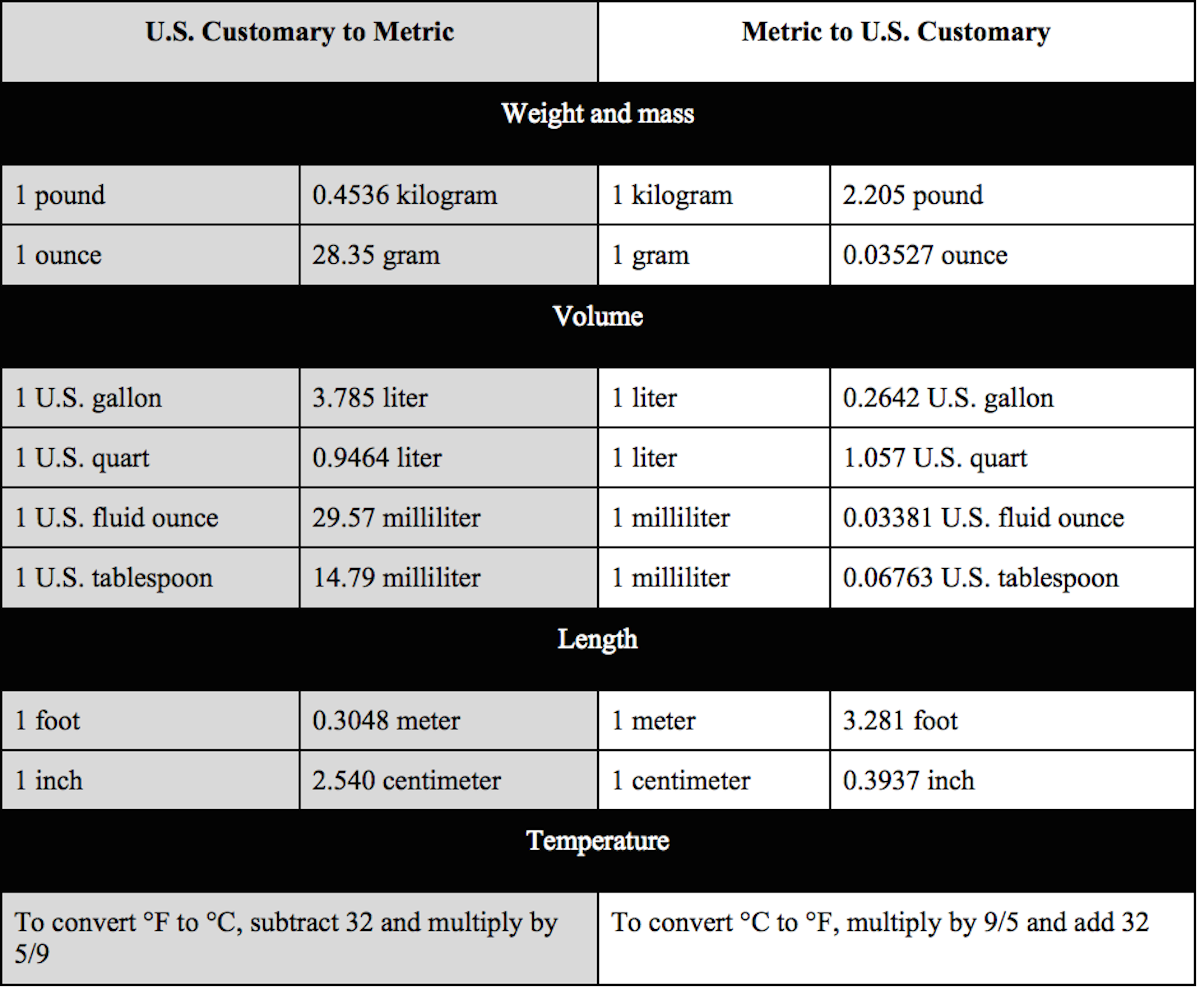At the risk of alienating readers whose childhood memories of math and science classes rank right up there with minor surgery, today we’re going to tackle units of measurement. Whether you’re weighing out specialty grains, calculating pre-boil volume, or timing the mash, measurement is at the heart of brewing. You simply can’t make good beer without it. But you don’t need a degree in astrophysics, just a little patience and a calculator or smartphone.
There are two primary systems of measurement you’ll come across as a brewer: metric and U.S. Customary. Now, a few brewers in Commonwealth countries might work in Imperial units, which are similar to U.S. Customary. But since equipment and ingredients outside the United States are sold almost exclusively in metric, we won’t discuss Imperial units. Just be aware that an Imperial gallon and a U.S. gallon are different, just as an Imperial pint and a U.S. pint are not the same thing.
Metric
The metric system is favored by most of the world’s governments and industries, and for good reason. All derivative quantities are expressed in terms of a base quantity and some multiple of 10. So, you have your meter, which consists of 10 decimeters, 100 centimeters, or 1,000 millimeters. Similarly, 10 meters is 1 decameter, 100 meters is 1 hectometer, and 1,000 meters is 1 kilometer. It’s nice and easy: All you have to do is move the decimal point around to switch between smaller and larger quantities.
U.S. Customary
U.S. Customary units are intimately related to Imperial units, upon which they are based. But quantities aren’t related by simple factors of 10, but rather by arbitrary and archaic conversion factors. So you have 12 inches in a foot and 5,280 feet in a mile. There are 2 cups in a pint and 2 pints in a quart, but 4 quarts in a gallon. And a pound is 16 ounces, which shouldn’t be confused with fluid ounces, which measure volume, not weight. Like learning vocabulary in a new language, you just have to memorize these things.
Consistency
In a brewing context, it’s generally advisable to pick one system and stick with it. If you purchase your malt by the kilogram and hops by the gram, then chances are you’ll want to brew by the liter. Similarly, if you make 5-gallon batches, you probably buy malt by the pound and hops by the ounce.
However, there are some exceptions to the whole consistency thing that can make things a little more convenient here and there. Even those of us who brew beer by the gallon almost always prepare our yeast starters by the liter. Why? Well, it’s a convenient little fact of nature that 100 g of dried malt extract (DME) dissolved in 1,000 ml (1 liter) of water will yield wort that has just about the right sugar concentration for propagating yeast. If I want to make a 2-liter starter, then I need 200 g of DME. Just divide by 10.
Precision
And then there’s the issue of precision. Take temperature, for example. The Fahrenheit scale has 180 degrees to express the differences in temperature between ice and steam (32°F to 212°F). The Celsius scale must do the same thing in just 100 degrees (0°C to 100°C). So, when we discuss mashing, in which small variations in temperature can have profound effects on the resulting wort, sometimes it’s more convenient to use Fahrenheit for the simple reason that each tick of the scale represents a smaller change in temperature. Sure, you can always work with decimal points in Celsius, but many analog thermometers don’t feature that kind of precision. I often measure hops by the gram for similar reasons.
In the end, it’s all about choosing a system that works for you. This might mean doing some conversion when you want to brew a published recipe or when working with a recipe from another country. The following table lists conversion factors for the measurements most commonly used in homebrewing, with a precision of four significant figures.

Density
Finally, there’s also wort density, which can be measured in Plato (°P) or in specific gravity units. That’s another topic unto itself, but a good rule of thumb is that 1 degree Plato is about 4 gravity points. So, 5°P is 1.020, 10°P is 1.040, and so on. This is accurate up to about 12.5°P, or 1.050, but even at 25°P (1.106), the error in using this approximation is a mere 6 percent. You probably won’t notice 6 percent difference in a beer that big.
As always, we highly recommend brewing software such as BeerSmith to do the math for you. Such software more than pays for itself in convenience and for eliminating the potential for error associated with hand calculations.

